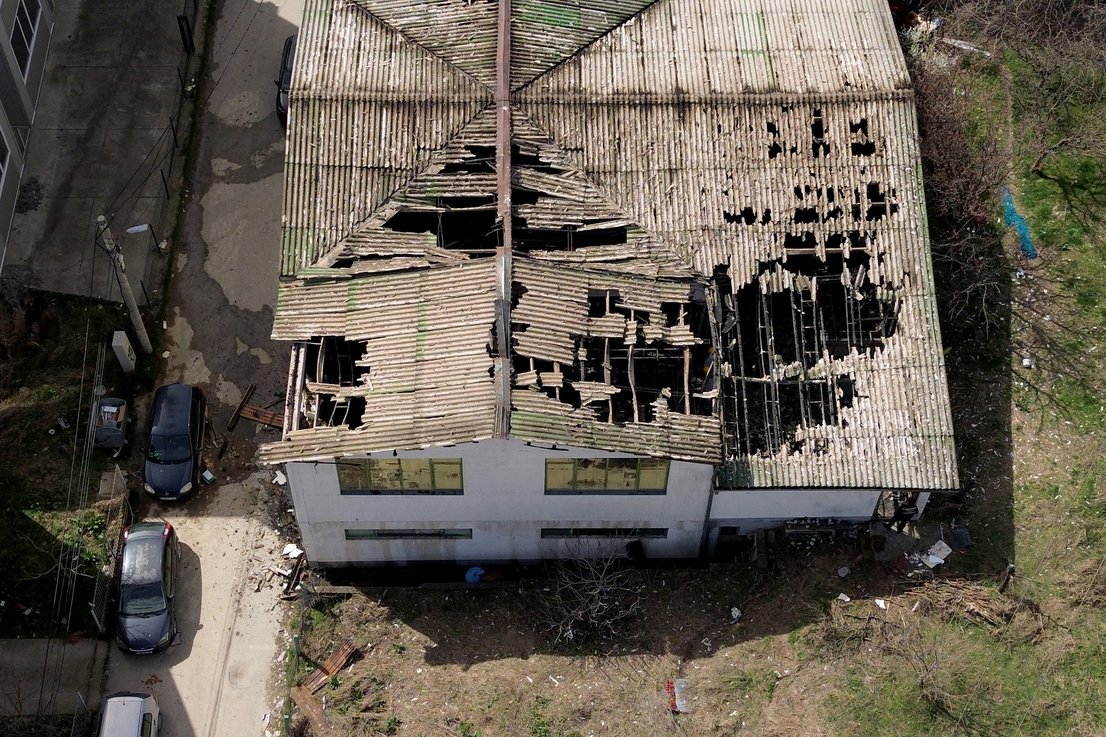Thailand's Deflation: Implications For Future Interest Rate Cuts

Table of Contents
Understanding Thailand's Current Deflationary Environment
Deflation, a sustained decrease in the general price level of goods and services, can be a significant economic challenge. While seemingly beneficial at first glance (lower prices!), it can lead to decreased consumer spending as people postpone purchases anticipating further price drops, resulting in a vicious cycle of economic slowdown. Several factors contribute to Thailand's current deflationary environment:
- Weak Consumer Demand: Reduced consumer confidence and spending power are key drivers. This is partly due to global economic uncertainty and concerns about job security.
- Falling Oil Prices: Lower global oil prices have a deflationary effect, reducing the cost of imported goods and impacting inflation rates.
- Global Economic Uncertainty: The global economic slowdown, geopolitical tensions, and supply chain disruptions all contribute to reduced demand for Thai exports and weakened economic growth.
Key indicators pointing to deflation in Thailand include:
- Thailand CPI (Consumer Price Index): A consistently low or negative CPI indicates falling prices across a basket of consumer goods and services.
- Producer Price Index (PPI): A declining PPI reflects decreasing prices at the producer level, signaling deflationary pressures throughout the supply chain.
- Falling Asset Prices: Decreases in real estate and stock market values can also indicate broader deflationary trends. These factors contribute significantly to the deflationary pressure currently affecting the Thai economy.
The Bank of Thailand's Monetary Policy Response
The Bank of Thailand's current monetary policy stance is focused on mitigating the deflationary pressures and supporting economic growth. The BOT has implemented several measures in the past, including interest rate cuts. However, the effectiveness of these past cuts has been debated. The BOT's toolkit includes:
- Interest Rate Cuts: Lowering interest rates aims to encourage borrowing and investment, stimulating economic activity.
- Quantitative Easing (QE): While not yet extensively utilized in Thailand, QE involves the BOT injecting liquidity into the market by purchasing government bonds or other assets.
- Reserve Requirements: Adjusting the reserve requirements for commercial banks can influence the amount of money available for lending.
However, the BOT faces limitations. The effectiveness of interest rate cuts Thailand depends on various factors, including consumer and investor confidence, global economic conditions, and the transmission mechanism of monetary policy.
Arguments For Further Interest Rate Cuts
Advocates for further interest rate cuts argue that they are necessary to:
- Stimulate Economic Growth: Lower borrowing costs can incentivize businesses to invest and expand, creating jobs and boosting overall economic activity.
- Boost Consumer Spending: Lower interest rates can make borrowing cheaper for consumers, encouraging spending on durable goods and services.
- Increase Investment Thailand: Reduced financing costs can attract foreign and domestic investment, fostering economic expansion.
Potential positive outcomes include a revival of consumer confidence, increased employment rates, and accelerated economic growth.
Arguments Against Further Interest Rate Cuts
Conversely, arguments against further interest rate cuts emphasize potential risks:
- Inflation Risk Thailand: While currently facing deflation, aggressive rate cuts could potentially trigger inflation in the future if consumer demand rises too rapidly.
- Alternative Economic Policies: Some argue that focusing on structural reforms, fiscal stimulus, or other policies might be more effective in addressing the underlying causes of deflation.
- Global Economic Uncertainty: The global economic climate adds uncertainty, making it difficult to predict the effectiveness of monetary policy interventions.
Potential negative consequences include an uncontrolled surge in inflation, asset bubbles, and the devaluation of the Thai baht.
Analyzing the Potential Impact of Future Interest Rate Cuts
The potential economic consequences of further interest rate cuts are multifaceted. While they could stimulate economic growth in certain sectors, they could also lead to unintended consequences.
- Positive Impacts: Increased investment in export-oriented industries and the tourism sector; potentially higher consumer spending, leading to increased demand for domestically produced goods.
- Negative Impacts: Possible weakening of the Thai baht, increasing the cost of imports; potential inflationary pressures in the longer term if demand exceeds supply.
The sectoral impact will vary significantly. Export-oriented industries may benefit from a weaker baht, while import-dependent sectors could face increased costs. The long-term implications depend on the effectiveness of the cuts in stimulating sustainable economic growth and avoiding potential negative side effects.
Conclusion: The Future of Interest Rate Cuts in Thailand and Deflationary Pressures
Thailand's deflationary environment presents a complex challenge for the Bank of Thailand. The decision regarding further interest rate cuts requires careful consideration of various factors, weighing the potential benefits against the risks. The analysis highlights the uncertainty surrounding future monetary policy decisions. It's crucial to carefully monitor the evolving economic situation and the BOT's policy responses.
To stay informed about Thailand's economic situation and the Bank of Thailand's monetary policy decisions related to Thailand deflation and potential future interest rate cuts, follow reputable economic news sources and the Bank of Thailand's official announcements. Understanding the nuances of this complex issue is critical for navigating the ongoing economic landscape in Thailand.

Featured Posts
-
 Zrtve Pozara V Nocnem Klubu Pokopi V Kocanih In Okolici
May 07, 2025
Zrtve Pozara V Nocnem Klubu Pokopi V Kocanih In Okolici
May 07, 2025 -
 Steph Currys All Star Championship A Dud Format
May 07, 2025
Steph Currys All Star Championship A Dud Format
May 07, 2025 -
 Nova Fotosesiya Rianni Spokusliviy Obraz U Rozhevomu
May 07, 2025
Nova Fotosesiya Rianni Spokusliviy Obraz U Rozhevomu
May 07, 2025 -
 Premium Automakers In China Facing Headwinds In A Shifting Market Bmw And Porsche
May 07, 2025
Premium Automakers In China Facing Headwinds In A Shifting Market Bmw And Porsche
May 07, 2025 -
 De Bussers Comeback Bosses Shoot Out Seals Go Ahead Cup Final Victory
May 07, 2025
De Bussers Comeback Bosses Shoot Out Seals Go Ahead Cup Final Victory
May 07, 2025
